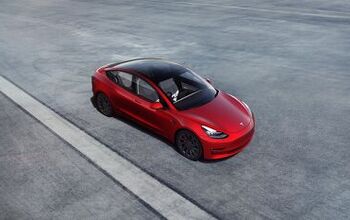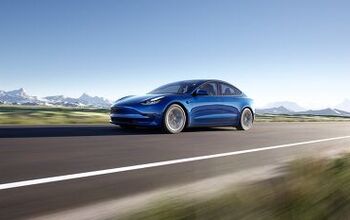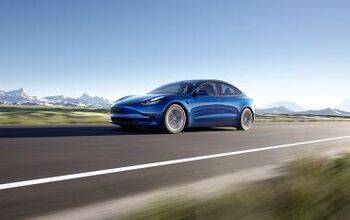Tesla Model 3 and the Complexity Budget

As the owner of a 2013 Tesla Model S P85 and occasional TTAC writer, I have my opinions on the Model 3. Many commenters thought Tesla’s business model of starting at the high-end and working its way down market was crazy, but Elon Musk had the right idea: use the cash flow from high-end car manufacturing to ramp up your engineering chops and supplier relationships so you can push prices down to eventually make a mainstream product.
That’s exactly what Tesla is doing and the plan seems to be working brilliantly — but there’s a catch: managing the engineering “complexity budget.”
When engineering very big systems, whether it’s the latest CPU from Intel or the latest car from General Motors, and you absolutely, positively, must ship your product on a schedule, then you have to manage change complexity from the previous product to the next product. That’s why you see car manufacturers building “platforms” where they can swap in different parts while keeping essential systems the same. These platforms let you decouple your release schedules. Ship the new car today and ship the new engine next year, if you must, but move those cars out the door!
With this in mind, you can see how audacious Tesla’s engineering has been.
The original Roadster, while borrowing a huge amount from the Lotus Elise, had a brand new battery and drivetrain, plus all sorts of carbon-fiber bits. The temperature management system on the battery alone was a huge engineering feat.
After that, Tesla developed the Model S with new everything: factory, battery, motor, software, etc. At least the automaker rolled out features as they became ready. The all-wheel-drive system wasn’t in the initial car, and the AutoPilot sensors shipped long before the software was ready to use them. That’s complexity under control. The counterexample is the pop-out door handles. It took Tesla several redesigns to get them right, and meanwhile you had customers puzzled at their stuck handles. Should Tesla had used boring, ordinary mechanical door handles? For the initial car, yes, absolutely.
Now, let’s consider the Model X. On its surface, the Model X is a very logical stretch of the Model S, with the same drivetrain and driver controls, but Tesla just couldn’t resist the temptation of those fancy rear falcon doors. The company was indeed caught in a bind when a supplier couldn’t deliver, which pushed the shipping schedule. If Tesla had engineered normal rear doors, the car might have shipped on time.
Now let’s look at the Model 3. In the abstract, the engineering challenge of the Model 3 is to make a cost-reduced Model S. That would need several mandatory bits of engineering complexity: reducing the materials cost of the batteries (thus the Gigafactory) along with everything else in the car. From this perspective, the austerity of a single, central touchscreen starts to make lots of sense. It’s a low-cost part, widely available, and easily reconfigured by software. Similarly, you can appreciate the lower cost of a traditional trunk and not the Model S’s motorized liftback. Top that off with the huge logistical challenge of scaling up your manufacturing operation, and you’re already pushing your engineering team to the brink.
Well, just like Tesla couldn’t resist the pop-out door handles for the Model S, or the falcon doors for the Model X, it’s also including a new “spacecraft control system” for the Model 3. Musk indicated that the plain steering wheel is just a placeholder for something new, yet to be revealed. This is exactly the sort of complexity overreach that I’m talking about. It would be one thing if Tesla shipped a “normal” car right away and then rolled out the fancy gizmos later on, perhaps first on higher-cost Models S and X and later on the Model 3. Certainly, there are plenty of other things that should “obviously” be in the pipeline for the Model 3. The market would happily purchase CUVs, convertibles, minivans, and other body styles riding on the same drivetrain, each of which would have its own complexity to deal with, particularly on the manufacturing floor.
How does Tesla’s Model 3 complexity compare with the traditional marques? GM is probably the most aggressive with its Chevy Bolt, which you can already internalize how absolutely ordinary it will be to drive. Fire all of your guns at once and Chevy still won’t explode you into space, as Tesla seems to desire.
Das Germans seem to be focused on plug-in hybrids at a higher base price than the Model 3 or the Bolt, and on “compliance cars” like the Audi A3 e-Tron, with again a higher base price and nowhere near the range of the Bolt or Model 3. But Das Germans do have a handle on product complexity. That A3 e-Tron is really just another variant of the Golf, with presumably a significant carryover from the larger platform.
Consequently, we’re left with something of a rabbit vs. tortoise race. Tesla’s rabbit is bounding forward, and I’m sure its engineers are at the limits of what they can manage. For now, GM is perhaps the only marque in the game who’s trying to run with Tesla, and the rest of the industry is firmly in the slow evolution/complexity management game. The billion-dollar question is whether Tesla will trip and fall while everyone else catches up, or whether it’ll truly pull it off and deliver on those 400,000 reservations. If they ship with an ordinary steering wheel, you’ll know it decided to prioritize its complexity management to hit a target. If it’s really gonna make it happen and take the world in a tech embrace, expect costly delays.
[Images: Tesla, General Motors, Peter W J Miller]

More by Dan Wallach
Latest Car Reviews
Read moreLatest Product Reviews
Read moreRecent Comments
- Kwik_Shift_Pro4X Canadians are able to win?
- Doc423 More over-priced, unreliable garbage from Mini Cooper/BMW.
- Tsarcasm Chevron Techron and Lubri-Moly Jectron are the only ones that have a lot of Polyether Amine (PEA) in them.
- Tassos OK Corey. I went and saw the photos again. Besides the fins, one thing I did not like on one of the models (I bet it was the 59) was the windshield, which looked bent (although I would bet its designer thought it was so cool at the time). Besides the too loud fins. The 58 was better.
- Spectator Lawfare in action, let’s see where this goes.






































Comments
Join the conversation
So the tweet says interior and controls like a spacecraft. I take it that it will be small and cramped and the computer will do most everything for you. I hope he isn't going for a side stick controller. I would think that would get tiresome after a while. Yes, aircraft and spacecraft have them but unless they are going full auto on the car that comparison doesn't work. Planes and spacecraft aren't hand flown the whole time. Not being able to hoon the car now and then would be a deal breaker for me, but I guess all the new kids will be fine since they are used to the PS/X-Box controllers.
This is a really interesting post, and it becomes more interesting when you add in another point about Tesla (and Musk's businesses in general). Tesla has a habit at hiring engineers well below markets rates for their zealotry, and burning them out. The consequence is that they have really high turnover. Now you pair their never-ending drive for complexity with this high turnover rate, meaning that they are losing their institutional knowledge as fast as they gain i, it spells really turbulent times ahead.